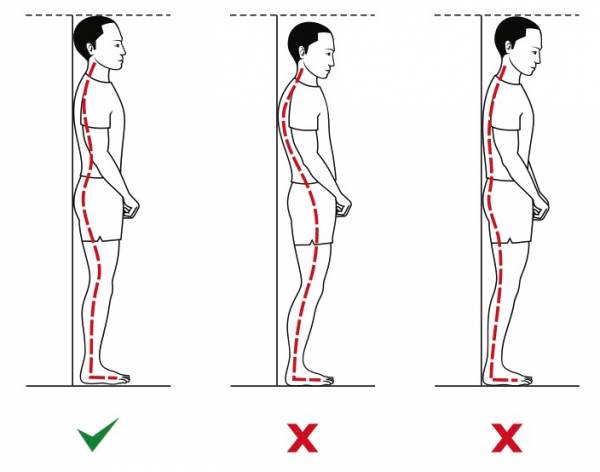The press, push press, push jerk, snatch, and overhead squat all require a specific level of shoulder mobility before you should perform them under any significant load. If these movements are performed with an improper range of motion, then they can cause significant damage to your shoulder while simultaneously setting your back and hips up for disaster, too. Overhead lifts are perhaps the most difficult lifting movements due to the range of motion demand from the entire body, not just the shoulder joint, along with the necessary ability to stabilize that load.
The overhead lift setup requires the ability to stand in good posture with correct lumbar and thoracic curves. You need full overhead extension of the shoulder, keeping the rib cage tucked, the neck in a neutral position, and elbows locked out. Once this position can be properly maintained, you can add load by starting with the overhead press. After the overhead press is mastered, you can add load and speed with the push press. After the push press is a smooth and coordinated movement, you can progress into the push jerk. When the push jerk becomes a natural movement, then learning the overhead squat is next. Clean and jerks can also be implemented during this time for power development.
People often a rush to perform overhead squats, but the development of strength and coordination first is critical, along with having a competent front squat. Only once these prerequisites are met should you begin to overhead squat. And the overhead squat to full depth should be mastered before any full snatches are done. You can begin to power snatch or snatch balance to learn the coordination, but wait until the overhead squat becomes a natural movement before starting full range of motion snatches.
In short the progression for the overhead lifts is this:
- Strict Press
- Push Press
- Push Jerk
- Clean and Jerk
- Overhead Squat
- Power Snatch
- Snatch Balance
- Full Snatch
Developing overhead ability is a combination of establishing enough muscle flexibility, joint mobility, trigger point reduction, and stability. If you cannot meet the criteria listed in the beginning of this article for proper mobility, begin by using the following techniques:
 1. Begin with spinal mobility, because without a proper base your shoulders are doomed for failure. Use the posture test against the wall as a start. If good posture is achieved easily, begin to raise your arms overhead and try the posture test in an overhead position. If your back begins to peel off the wall use a foam roller for thoracic extension, lat trigger point, and chest trigger points.
1. Begin with spinal mobility, because without a proper base your shoulders are doomed for failure. Use the posture test against the wall as a start. If good posture is achieved easily, begin to raise your arms overhead and try the posture test in an overhead position. If your back begins to peel off the wall use a foam roller for thoracic extension, lat trigger point, and chest trigger points.
2. Take a look at your shoulders. Shoulders are tough joints but are an intricate web difficult to replicate and understand. I believe that most often it’s the major muscles connecting to the shoulder that become tight and should be addressed first. Don’t begin trying to fix your shoulder mobility by cranking on the joint. In fact, I’m hesitant to prescribe any if much true shoulder stretching, specifically that with external and internal rotation. This is because it can be overdone, and people want to crank to get things moving again quickly. So work on the surrounding muscles, but be nice to your shoulder joint.
3. Once the standard starting position for overhead work is met, doing overhead isometric work such as waiter’s walks and overhead barbell walks are great ways to build stability and strength in a safe manner. While these are great movements, they are also probably the most rushed in the CrossFit world with coaches trying to correct people on the fly. The issue becomes that without the range of motion and stability, no amount of coaching will matter. The only coaching that is effective at that point is giving the client a substitution. After the walks are competent and controlled, then exercises such as the Turkish get up and windmills are also effective to bolster the integrity of the shoulder joint.
Realize that it took your shoulders years, if not decades, to get tight – so they are not going to open back up in a day. Be patient and work consistently. Consistent effort will yield better results than trying to pack a ton into a single day or session per week. Also take time to evaluate what other factors and environments in your life are contributing to immobility and poor positioning. Helping to correct those is often just as effective as direct mobility work. Realize that even if you want to become competitive at CrossFit in your box or at a higher level, it’s the long-term rise you are looking for, not quick success.
Photo 1 courtesy of CrossFit LA.
Photo 2 courtesy of Shutterstock.






